The oldest religion in the world, Hinduism, originated in Central Asia and the Indus Valley and is still practiced today. The Hindu religion is the third largest religion globally, behind Christianity and Islam, with over a billion followers. Westerners and others worldwide have many misconceptions about the people who practice the religion as well as the religion itself. This article will discuss some common myths and realities about Hinduism.
10 Common myths about Hinduism

Myth No. 1: Hindus Worship Idols
Every Hindu is aware that idols are not gods. They can focus on their aspect of prayer and meditation by using the idols, which are images of God. These statues serve as God’s material representation. Because of this, you’ll often see students praying to Saraswati for learning, Laxmi for wealth, or Ganesh to start something new.
Myth No. 2: There are 330 million Hindu gods
Given that there are 330 million gods represented in Hinduism, it is common to mistakenly believe that the religion is polytheistic; however, this is not the case. Hinduism has a complicated and variable conception of God but centers on a single Supreme Being or God. There are three main deities in the Trimurti – Brahma, who creates; Vishnu, who preserves; and Shiva, who destroys.
Myth No. 3: The Bhagavad Gita is like the Bible
The Bhagavad Gita is one of the best-known Hindu texts in the Western world, but it is not a Hindu Bible. But Hinduism has an extensive body of ancient religious writings rich in scripture. The Vedas, Upanishads, Puranas, and the Bhagavad Gita, also known as the Song of God, are among the scriptures. Throughout the Gita, Pandava Prince Arjuna and Lord Krishna discuss many tenets of Hinduism. The Bhagavad Gita covers the fundamental principles of Hinduism.

Myth No. 4: Women With ‘Red Dots Are All Married
In Hindu culture, bindis play a spiritual role, though this has diminished over time. A red dot represents marriage for Hindu women. The dot, or bindi, is primarily decorative today. All-color bindis are worn by girls and women, married and unmarried, as a fashion statement. Another forehead mark with religious significance is a tilak. It typically takes the shape of lines or dots and is made from sandalwood paste, ashes, or red turmeric.
Myth No. 5: Hinduism Forbids Meat
There is no prohibition against eating meat, fish, or any other animal in Hinduism. Ancient saints advise a balanced diet because it is thought to help you maintain emotional equilibrium. Some Hindu sects choose to abstain from eating meat out of personal religious conviction. However, it is possible to live a Hindu life without making dietary adjustments.
Due to the spiritual practice of ahimsa, which is a principle of nonviolence toward all living things, only 30–35 percent of Hindus identify as vegetarians. Over 300 million people worldwide are vegetarians, the vast majority of whom are that small minority of vegetarian Hindus.
Myth No. 6: Hindus pray to cows
In Hinduism, every living thing is blessed with a soul. Hindu society does, however, place a special value on cows. Hindus don’t worship cows. This widespread misunderstanding is a result of the way Hindus treat the cow. This animal gives more than it takes, is representative of all other animals, and symbolizes life and the sustenance of life.
A cow only consumes grain, grass, and water but produces more than it consumes in the form of milk, cream, yogurt, cheese, butter, and fertilizer for the fields. Cows are regarded as maternal caretakers and are respected for their gentle nature. Outsiders worship cows because of how revered they are in Hinduism and Indian society. Hindus, however, view it as honoring and respecting the animals.

Myth No. 7: Caste discrimination in Hinduism
The caste system and hierarchy were established based on occupation in most nations where Hinduism is the predominant religion. However, this system has no roots in religion but rather in culture. Caste discrimination is not sanctioned in Hinduism in any way. The caste system in India does not reflect a person’s personality; rather, it reflects the group to which they were born. In contrast, the Hindu term varna describes the social order as a framework of moral obligations connected to an individual’s traits independent of birth.
Myth No. 8: Women Are Subservient To Men
The myth about Hinduism that matters the least is this one. It is universally true that system patriarchy affected women, not their religion. But in Hinduism, men and women have always been treated equally regarding respect and power. As much as the men have, female ancient Vedic scholars like Gayatri, Apala, and other illustrious women have contributed to and enriched the religion. There are still many revered Hindu gurus who are female in today’s society. A divine deity known as Shakti is a feminine form in various forms of Hinduism.

Myth No. 9: It’s Called Hinduism
The terms “Hindu” and “Hinduism” are outdated and do not refer to any of the religion’s earliest writings. The phrase refers to the inhabitants of India’s Indus River region. The words “Hindu” and “Hinduism” most likely originated with the Persians. They invaded the Indian subcontinent and may have used the word “Hindu,” which means “river,” to refer to the inhabitants of the river valley.
Sanatana Dharma, which means “eternal duty of God,” is the name Hinduism is more commonly known in the West. Dharmic, which translates to “followers of Dharma,” are followers. Though many contemporary Indians have adopted them, the terms “Hindu” and “Hinduism” are primarily used in Western cultures. Buddhism, Jainism, and Sikhism are other dharmic religions similar to Hinduism.
Myth no.10: Karma is fatalistic
According to Hinduism, what you do today will affect how the rest of your life turns out. Hindus, however, hold that not all of the decisions you make in life will determine your future and that your past also shapes who you are today. However, the objective is to perform as many ‘punyas’ (good deeds) as possible to free your soul from the cycle of rebirth and reach moksha.
Conclusion
Hinduism is a way of life that directs people’s thoughts, words, and deeds toward achieving salvation, or moksha. This religion’s teachings are based on compassion and love, and it is always changing to become more current and inclusive.


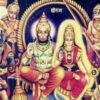
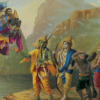

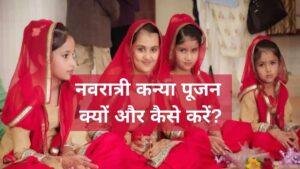
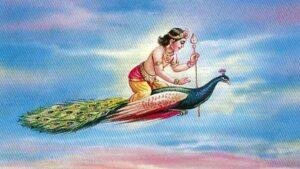
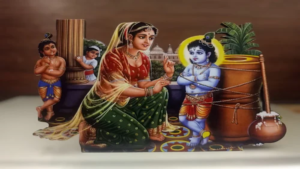
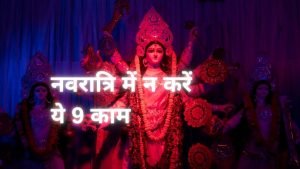




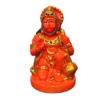
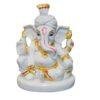




Add comment